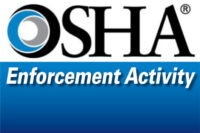The percentage of employees in the general U.S. workforce whose drug tests showed signs of tampering increased by more than six-fold in 2023 versus the prior year, according to a new analysis by Quest Diagnostics. The analysis, which looked at nearly 9.8 million drug tests, marks the highest rate of drug test tampering in more than 30 years.
Quest Diagnostics found that the increase in substituted urine specimens in the general U.S. workforce was a key driver of the overall surge in drug test cheating. In 2023, the rate of substituted urine specimens increased by 633%, rising from 0.015% in 2022 to 0.11% in 2023. The analysis also revealed a significant increase in the rate of invalid urine specimens, which rose by 45.2% over the same period.
The rise in drug test cheating comes against the backdrop of historically high drug positivity rates in the U.S. workforce. Quest Diagnostics found that, in 2023, 5.7% of drug tests in the general U.S. workforce were positive for at least one substance, a rate that has remained consistent since 2022. The analysis also showed that post-accident drug positivity rates have surged, with a 114.3% increase since 2015.
Quest Diagnostics’ analysis identified a concerning correlation between the surge in drug test cheating and the ongoing increase in marijuana positivity. In states where recreational marijuana is legal, as well as in professional office-based industries, the rate of marijuana positivity has continued to climb. The analysis also found that the nationwide rate of post-accident marijuana positivity has reached 7.5%.
“The increased rate of both substituted and invalid specimens indicates that some American workers are going to great lengths to attempt to subvert the drug testing process,” said Dr. Suhash Harwani, Senior Director of Science for Workforce Health Solutions at Quest Diagnostics. “Given the growing acceptance and use of some drugs, particularly marijuana, it may be unsurprising that some people feel it necessary to try and cheat a drug test. It is possible that our society's normalization of drug use is fostering environments in which some employees feel it is acceptable to use such drugs without truly understanding the impact they have on workplace safety.”
The analysis also revealed a concerning increase in marijuana positivity within certain industries. In the general U.S. workforce, the rate of marijuana positivity increased by 4.7%, reaching 4.5% in 2023. The professional office-based sector saw even higher increases, with the Finance and Real Estate industries experiencing a more than 20% jump in marijuana positivity rates.
However, the data showed a different trend in safety-sensitive industries that are subject to federal drug testing regulations. In the federally mandated, safety-sensitive workforce, which includes positions like pilots and bus drivers, the rate of marijuana positivity actually decreased slightly, falling to 0.95% in 2023.
“Organizations must have sound policy and procedures to ensure employee drug testing programs have efficacy. Cheating on drug tests not only undermines workplace safety but also jeopardizes the safety of society as a whole,” said Katie Mueller, a senior program manager at the National Safety Council focusing on cannabis safety.
In addition to marijuana, Quest Diagnostics’ analysis also looked at positivity rates for other drugs. The data showed a 9.1% increase in cocaine positivity across all industries, with a 4.7% increase in the professional office-based sector. Positivity rates for amphetamines remained flat, while rates for prescription opioids like oxycodone and hydrocodone decreased.
Quest Diagnostics’ Drug Testing Index is published annually and is based on an analysis of de-identified laboratory test results. The index includes data from the general U.S. workforce, as well as the federally mandated, safety-sensitive workforce.








.jpg?t=1721257160)
